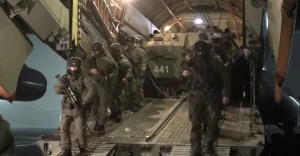
What is the difference between NASAMS and Patriots and how do these systems work in Ukraine?
The main difference is that NASAMS is an anti-aircraft missile system, while Patriot is an anti-missile system. Therefore, they are used against different air targets
Patriots are effective against targets that fall to the ground at an angle of 80-90°, i.e. ballistic targets. Whereas NASAMS are unlikely to allow a more maneuverable target flying close to the ground to escape, so their profile is still cruise missiles. Below is a closer look at the characteristics and capabilities of the NATO air defense systems that have been deployed to protect Ukrainian skies.
Air defense for presidents: what is NASAMS?
NASAMS is a Norwegian anti-aircraft missile system with a medium- and long-range American radar that can shoot down aircraft, helicopters, and cruise missiles. The United States has adopted it as a form of defense for the White House, and Latvia has deployed it to protect the Baltic region. Norway, Finland, Spain, the Netherlands, Oman, Lithuania, Indonesia, Australia, Qatar, Hungary, Ukraine, and one other country, whose name has not been disclosed, also have NASAMS.
The acronym NASAMS stands for Norwegian Advanced Surface to Air Missile System. The complex was developed by one of the giants of the global defense industry, the Norwegian technology group Kongsberg and the American company Raytheon. The first generation of these systems was introduced back in 1998. Since then, the system has been improved several times. The latest modification, the NASAMS III, was introduced in 2019.
The advanced system can use the advanced medium-range air-to-air missile AMRAAM, the extended-range air-to-air missile AMRAAM-ER, and the AIM-9X.
It is worth noting that NASAMS was the first ground-based system to use AIM-120 AMRAAM missiles and the first locator-guided missile system in the West. The letters SL in the SL-AMRAAM acronym stand for Surfaced Launched.
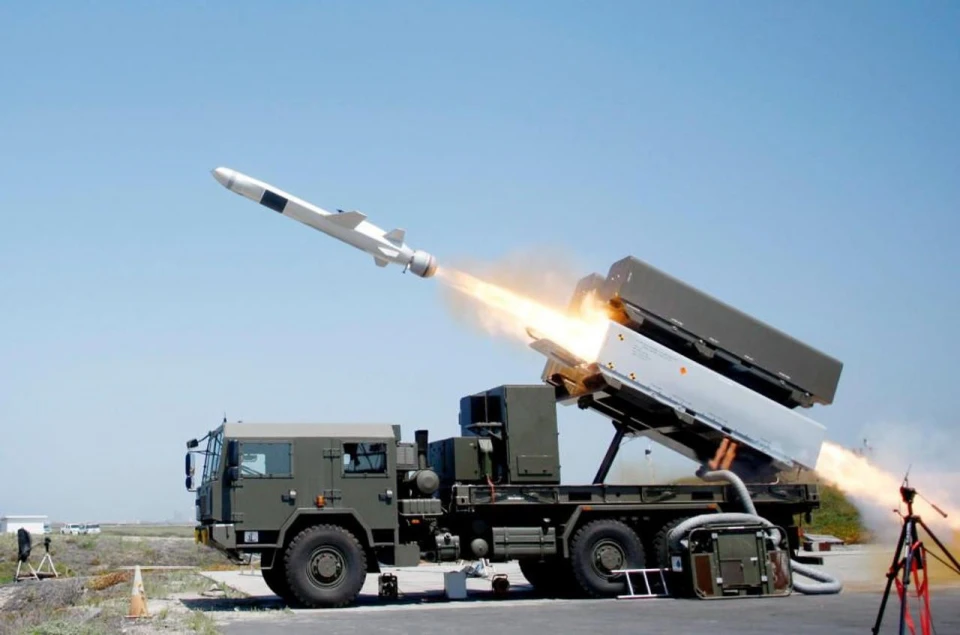
Photo: https://twitter.com/oleksiireznikov
NASAMS characteristics
The Norwegian manufacturer notes that the highly mobile NASAMS system was developed with a focus on operational flexibility to protect air bases, seaports, densely populated areas and other critical facilities, as well as the army.
The range of the system is up to 40 km (range depends on the missile), so it can destroy targets at a distance of 20-50 km and at altitudes of 20-30 km. The types of missiles used by the SAM are:
-
a conventional AMRAAM missile that hits a target at a distance of up to 20-25 km;
-
AMRAAM ER (Extended Range) missile, which has a range of 40 km;
-
other missiles that can hit aircraft at a distance of more than 100 km.
Advantages and disadvantages of NASAMS
The advanced anti-aircraft missile system has a number of advantages, including being mobile, having high accuracy, as it shoots down 85% of targets, and being able to maneuver, so it is better at destroying targets.
Another advantage is control. Launchers and radar can be located 20 km away from the control point, which is very important from a security point of view. Secondly, you can assign tasks to individual launchers, as well as combine them into a network.
According to military experts, the systems can shoot down aircraft, helicopters, cruise and aeroballistic missiles, and 'kamikaze' drones. But they are not capable of intercepting hypersonic missiles. They also have problems with intercepting ballistic missiles such as Iskander-M 723 and missiles such as Kh-22, which have high speed and high altitude.
In addition, NASAMS systems are impractical to use against 'kamikaze' drones due to the cost of their missiles. It is better to destroy attack drones with self-propelled systems, and use air defense systems as a last resort.
The range of NASAMS and how many missiles it can launch
One NASAMS launcher has six missiles. The battery itself, which consists of 9 or 12 launchers, can launch all 54 or 72 missiles in 12 seconds. In addition to the launchers, the battery includes 3D radars (AN/TPQ-64) manufactured by Raytheon, several auxiliary sensors, and a fire control command post.
The Norwegian manufacturer itself emphasizes that NASAMS control can be combined with longer-range air defense systems, including Patriot. Since the latter has a much longer range - 25 km versus 90-160 km - NASAMS requires more batteries than Patriot to cover the same area.
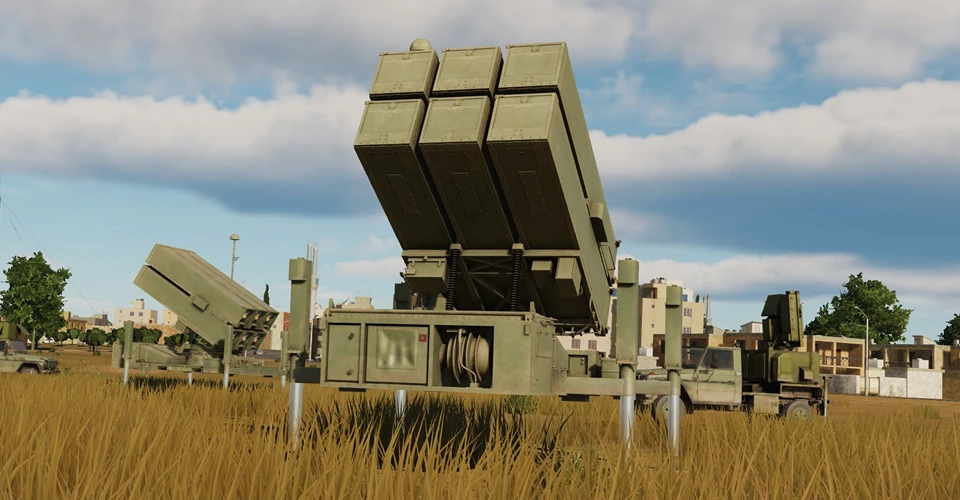
Photo: digitalcombatsimulator
NASAMS systems in service with Ukraine
The idea of the US providing Ukraine with an advanced system was first discussed in June 2022. Ukraine received the first systems in October, as announced by Defense Minister Oleksii Reznikov in early November. And on New Year's Eve, these air defense systems demonstrated high efficiency. Earlier, the Ukrainian Air Force reported that over 5 months of operation in Ukraine, these air defense systems destroyed more than 100 Russian missiles and drones.
By the way, military observer Tyler Rogoway noted that guided anti-aircraft missiles are a high-tech product with a long production time. Therefore, an important feature of the Norwegian-American complexes in the Russian-Ukrainian war is the availability of a large number of ready-made missiles for the SAM. The system is capable of using older versions of the AIM-120A/B, which are already reaching the end of their service life, and therefore countries can send them to Ukraine instead of disposing of them.
Read also: How F-16 fighters will change power balance in Ukraine’s air
In addition to the United States, Canada has also announced the purchase of NASAMS systems for Ukraine. It is known that in October last year, the Ukrainian army received 2 batteries, 6 more were ordered by the United States (due by November 2025) and one by Canada. Two NASAMS platoons are expected to be delivered in 2023.
On June 15, the ministries of Defense of the United States, Denmark, the United Kingdom, and the Netherlands announced that they would jointly supply Ukraine with missiles for air defense systems and increase the supply of the systems themselves. It is noted that these are hundreds of short- and medium-range air defense missiles and related systems that should help the Ukrainian army in its counteroffensive. The transfer has already begun and should be completed within a few weeks.
The Patriot universal air defense system
The MIM-104 Patriot anti-aircraft missile system is manufactured by Raytheon, the world's largest manufacturer of guided missiles. The systems are in service with the United States and its allies, including Poland, Romania, Germany, the Netherlands, Greece, and ten other countries.
The Patriot was designed as the main platform for air defense at medium and low altitudes. But in addition, this system is capable of intercepting ballistic missiles, and with the advent of the PAC-3 modification, this task is the main purpose of the complex.
In addition to launchers and missiles of several possible types, air defense systems also include a radar station, a control center, and other auxiliary operational equipment. The Patriot consists of an air interceptor missile and a high-performance radar system.
The system was developed in 1982 and was first used during the 1991 Gulf War, but then it became useful in missile defense rather than air defense. It was then that the Patriot began to be actively used as a missile defense system against Iraqi missiles, rather than as an anti-aircraft missile system. Since then, the Patriot and the interceptor missiles it uses have been constantly modernized by manufacturers. The system is now optimized for protection against ballistic and cruise missiles, and is also effective against military aircraft and helicopters.
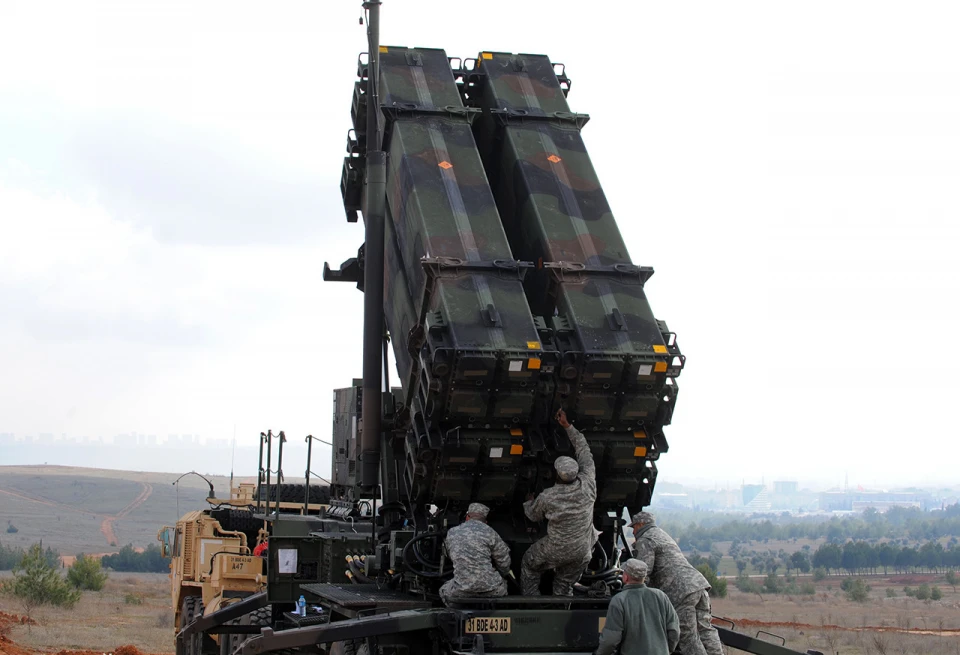
Photo: Getty Images
Patriot characteristics
According to the manufacturer, the system can intercept ballistic missiles at altitudes of up to 20 kilometers. The air defense system is designed to fully protect large administrative and industrial centers and military bases from air attack in the face of strong enemy electronic resistance. The MIM-104 Patriot system can detect and recognize more than 100 air targets simultaneously, continuously track 8 of them and calculate data for launch. The system is capable of simultaneously launching up to three missiles at a target.
The Patriot battery consists of four launchers, and in general, the complex can include from 1 to 8 launchers, each containing 4 MIM-104 or 16 PAC-3/MSE missiles. In addition, the system includes an AN/MPQ-65 radar (operating in the 90° sector - in the direction of a possible missile strike), a mobile control center, AN/MCR-137 radio relay stations, and power and maintenance vehicles.
The deployment time of the complex is 25 minutes.
The Patriot battery consists of four launchers. The system is armed with three types of missiles:
-
MIM-104A - designed to intercept aerodynamic targets (air defense)
-
MIM-104B - have the function of passive targeting of jammers or ground radars (anti-aircraft missiles)
-
MIM-104C/D/E - intercept ballistic targets.
The maximum height of the target is 24.2 kilometers, and the range is 50-160 kilometers, depending on the type of missile. To destroy air targets, the MIM-104 Patriot PAC-3 uses the PAC-2 missile, which is said to be capable of destroying enemy aircraft at a distance of up to 160 kilometers. The system can engage ballistic targets at an altitude of up to 15 kilometers.
Interestingly, the Patriot missile has its own radar homing head and can reach speeds of up to 4.1 Maxa, or about 5,000 km per hour. However, launching one Patriot missile can cost about USD 3 million. Despite being 40 years old, the system has few analogues in the world.
Advantages and disadvantages of Patriots
Operator countries have received an upgraded version of the 2001 system, the MIM-104 Patriot PAC-3. In addition to its ability to effectively engage ballistic missiles, the latest Patriot modification has another feature: the interceptor missile hits the target directly, rather than exploding next to it.
As for the Patriot's weaknesses, they are related to the complexity of operation. A good example is the US Army, where this air defense system operates as part of a battalion. The unit usually includes a command post, a repair company, and four to six air defense batteries.
Read also: Why are Leopard tanks important in Ukraine's counteroffensive?
Each battery consists of 6 launchers, a radar station, a communication device, a field power plant and a fire control center. The total staff of a battery is 70-90 people, and a Patriot battalion consists of 600 soldiers. So when we talk about the MIM-104 Patriot, we should imagine not just one launcher, but more than five hundred soldiers, most of whom are highly specialized engineers, as well as more than fifty individual vehicles. However, according to experts, the effectiveness of the Patriot's use and airspace protection is worth the resources required.
Patriot systems in Ukraine
In December 2022, during Volodymyr Zelenskyy's visit to the United States, US leader Joe Biden announced a new military aid package for Ukraine, which included Patriot systems and ammunition. In addition to the United States, Germany and the Netherlands promised to provide the systems.
It should be noted that before the Patriot systems, Ukraine had no weapons to shoot down ballistic missiles. This is the first system that can shoot down targets such as Iskander-M.
In January of this year, it was reported that the Ukrainian military was being trained to operate the system in a shortened 10-week program. And on April 19, Defense Minister Oleksii Reznikov announced that the first three Patriot air defense systems, provided by the United States, the Netherlands, and Germany, had arrived in Ukraine. At the time, the Defense Minister emphasized that the Ukrainian military had mastered the systems as quickly as possible.
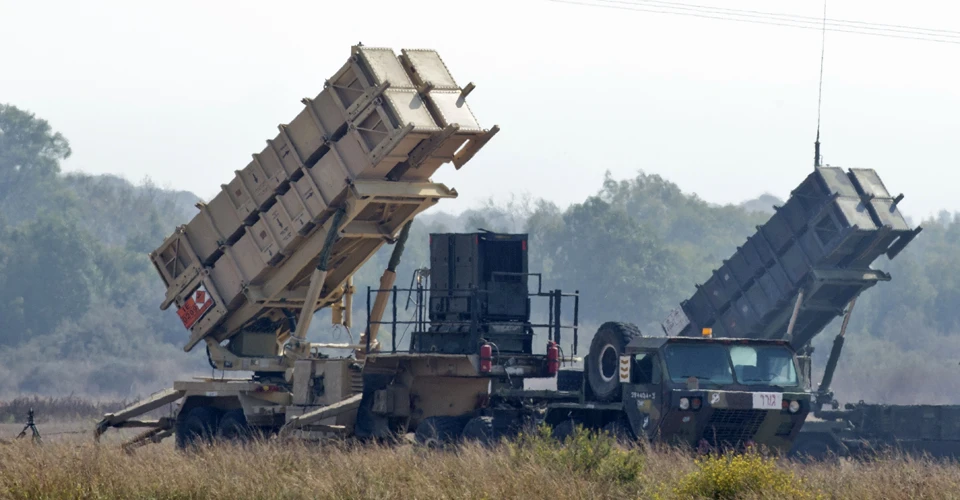
Photo: gettyimages
On June 16, German Defense Minister Boris Pistorius said at a meeting of NATO countries that his country would immediately transfer 64 more guided missiles to Ukraine for the Patriot system.
Earlier, the Air Force reported that the Patriot systems would help Ukraine in certain areas where Russians use guided bombs from Su-35 aircraft.
It is not known where in Ukraine the US anti-missile systems are deployed, but it was reported that these systems destroyed several Kinzhal air defense missiles in the skies over the Kyiv region during the attacks in May. In particular, during another massive attack on the night of May 16, the Russians fired 18 missiles of various types at Ukraine. Six X-47M2 Kinzhal aerial ballistic missiles were fired from six MiG-31K aircraft, 9 Kalibr cruise missiles were fired from ships in the Black Sea, and 3 land-based missiles (S-400, Iskander-M) were launched as well. According to the Air Force, all of the precision-guided Kinzhal missiles were aimed at Kyiv, but they were shot down.
At the time, the Kremlin claimed that five Patriot launchers were allegedly destroyed during the attack. Western media, citing sources in the Pentagon, reported that one system was indeed damaged, but only slightly, and that it was able to destroy Russian targets in the Ukrainian sky again after being restored.
For example, the Ukrainian military has successfully integrated Patriot systems into the country's current air defense system. Previously, it depended on Soviet models, such as the S-300 short-, medium-, and long-range air defense systems, Buk missile systems, and so on. However, Ukraine needs a lot of modern Patriot air defense systems to ensure that its defense is effective and efficient throughout the country.
Read also: Peculiarities of Patriot system and how it has changed Ukraine's air defense
- News








